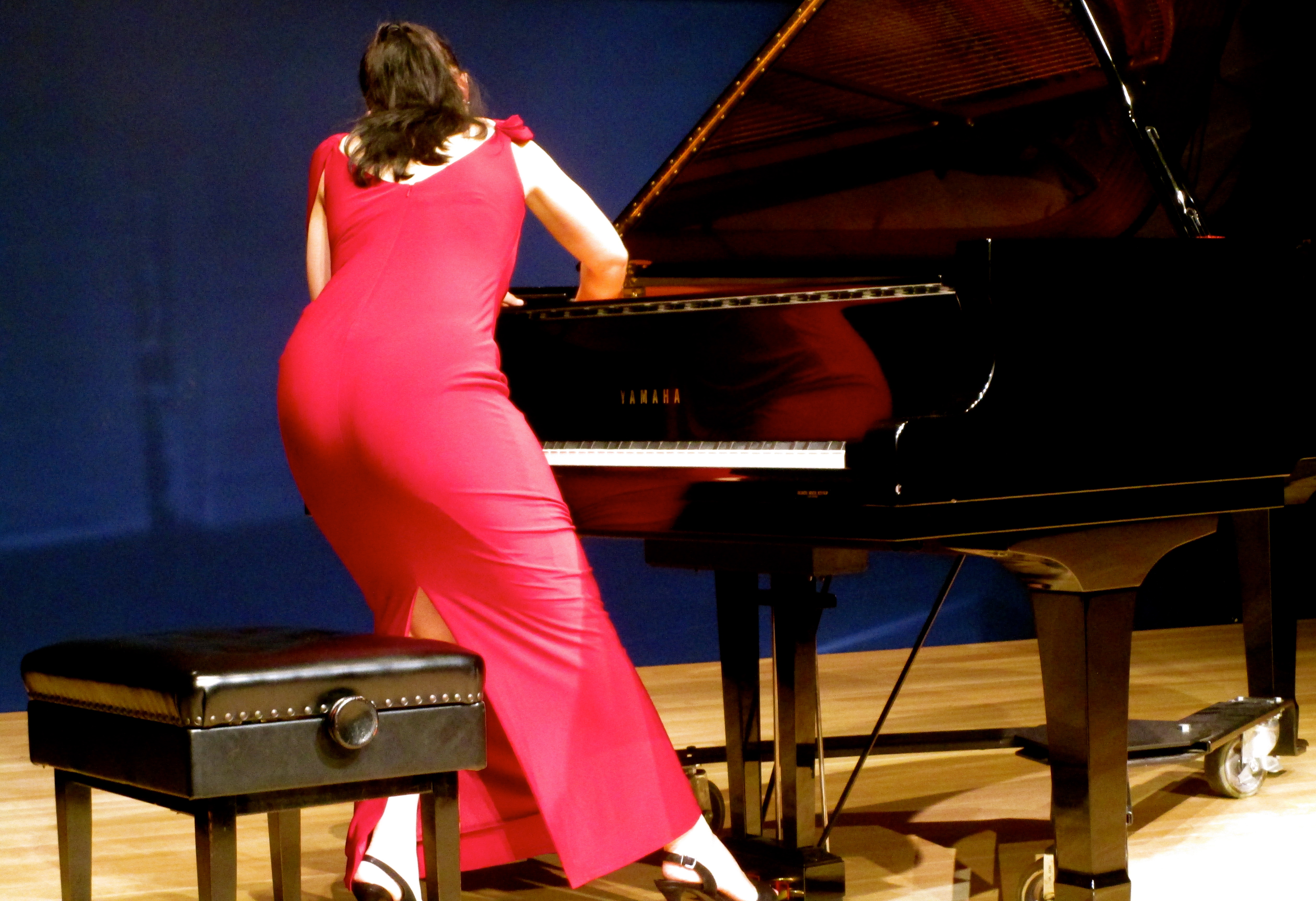My first sight and sound of Tania Stavreva was at a tribute to the Argentine composer Alberto Ginastera in his centennial year. The Bulgarian-born pianist opened the concert, to great effect, with two Ginastera pieces and one, “Bulgarian Prelude” (2016), that she had written in his honor. I noticed afterward, following her career, that she played in some unlikely venues, for a classical pianist, including downtown spots associated with rock, electronica, and folk. In January she put out a CD called Rhythmic Movement, which made the Billboard Top Ten. The album is distinguished by a vigorous engagement with a repertory of composers better known in classical music than by the general public, as well as her own compositions.
Last Wednesday at the National Opera Center, Stavreva played a similarly varied mix in celebration of the Day of the Slavonic Alphabet, Bulgarian Enlightment and Culture. She performed five of her own works, two with live electronics by Jon Ososki, one a premiere; a piece each by the Bulgarian composers Mario Angelov and Alexander Vladigerov; and three by Dobrinka Tabakova, who is British-Bulgarian, including both a U.S. and a world premiere. The program added up as a whole, balanced in tone, length of piece, tempo, and rhythmic contrast. Stavreva veers toward music that reveals something about music, exposing its structure and the nature of her instrument. Her “Rhythmic Movement” (2012) and “Left Hand Path” (2016) are like exercises transformed into short, but full and complete, compositions. The selections she played from Tabakova’s “Modetudes” (2009), based on an Aristotelean theory of sound, are a similar vein. Stavreva seems interested in having you learn something, interspersing her playing with commentaries that fit the occasion and illuminate the music; a program note recounted the history behind the holiday that was being marked.
Stavreva makes a dramatic impression. She doesn’t hold back and is theatrically aware. If the music requires that the keys be pounded, so be it, the drama of which is visual as well as musical. (That’s true on album as well as in concert: hearing it makes you see it played.) It’s not that she plays for the eye; it’s that the sound originates in a physical architecture. When she leans into the well of the piano to attack its strings as though it were an upended harp, she has has a dancer’s line, transmitting energy from her feet up her side through her hands into a controlled explosion of chords and musical shrapnel. She commands attention by holding herself physically suspended, detaining applause for pieces that must end, for their effect, with an extended silence. It’s the concert equivalent to how her “The Dark Side of the Sun” (2016) ends on the CD (without the electronics), suspending the track in a vibratory residue until it devolves, slowly, to soundlessness.
The lower registers and how they interact with the higher ones have a special impact from her. This is partly due to the pieces she selects, and writes, but something in her keeps the registers discrete and encourages interplay. More than once in the Wednesday concert, there was a pattern of pursuit and tactical escape, the lower chasing the higher, only to have it get away, double back and nip at its heels. “Left Hand Path” seems, in this light, no accident, a statement, even, of her sensibility, peeling a part from the whole that it might flourish apart.
That is, of course, what solo artists like Stavreva do, or aspire to, including in collaborations, as with Ososki’s electronics, that support their flourishing. She is compelling, in her art, as her own person, with a distinct calling and sensibility. Her music sticks with you afterward, not as recollection (that will come later), but like the vibration she makes you hear after the last note is struck.
For more on Tania Stavreva, the CD, and her concert schedule, click here.
